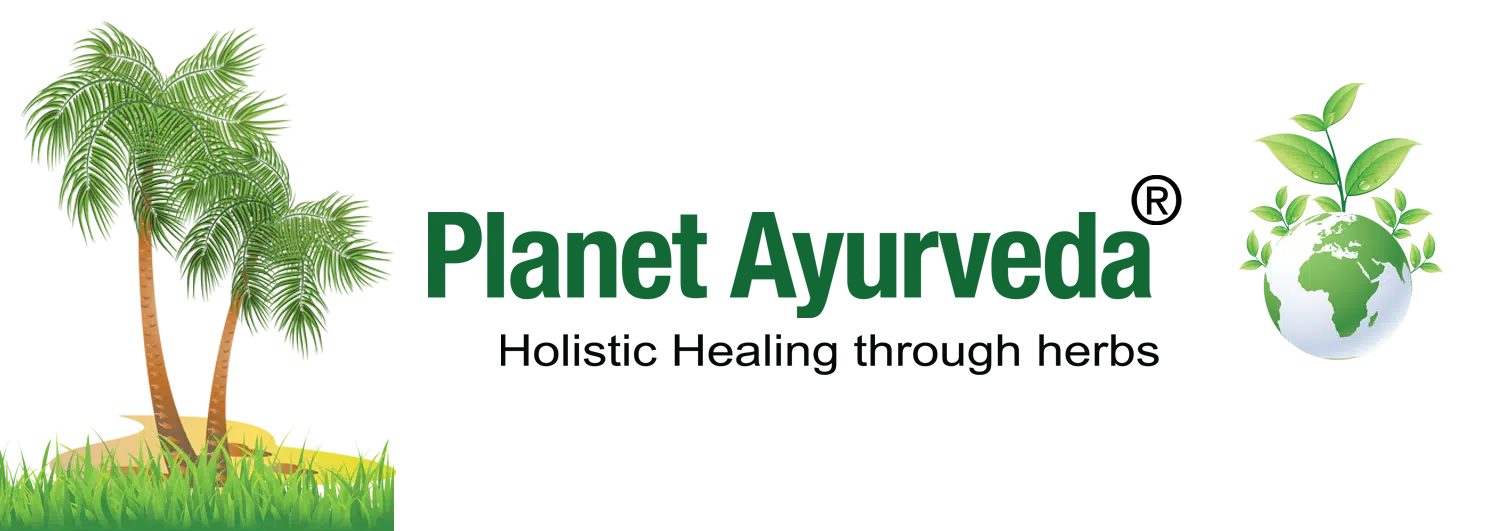Hara-Bhara Ark – Medicinal Properties, Ingredients, Indications, Dosage & More
Reference : Ayurveda Sar Sangrah, Page number – 648
Abstract
Ark Hara-Bhara is a traditional Ayurvedic distillate formulated with 20 time-tested herbs known for their Pitta-pacifying, blood-purifying, and urinary tract cleansing actions. It is primarily indicated in chronic conditions like Rajayakshma (Tuberculosis), Ura-Kshata (Chest injuries), Mutradaha (Burning micturition), and Sujaak (Gonorrhea). Its formulation is based on classical Ark Kalpana, where volatile and water-soluble active principles are extracted through distillation. The Ark strengthens immunity, detoxifies the system, cools internal heat, and acts as an antimicrobial agent.
Introduction
In Ayurveda, Ark is a distilled herbal preparation that captures the subtle and potent properties of medicinal plants. Ark Hara-Bhara is a comprehensive blend of cooling, diuretic, antipyretic, and rejuvenating herbs that are especially useful in Pitta-pradhana disorders and chronic infectious diseases. Its holistic composition balances Tridosha, supports Agni (digestive fire), and cleanses the Rasa and Rakta Dhatus (plasma and blood). This classical preparation plays a crucial role in modern times for managing systemic infections and genitourinary disorders with natural, side-effect-free therapy.
Ingredient
- Lal Chandan (Pterocarpus santalinus)
- Khas (Chrysopogon zizanioides)
- Padmakh (Prunus cerasoides)
- Nagarmotha (Cyperus rotundus)
- Fresh Giloy (Tinospora cordifolia)
- Pitt Papda (Fumaria officinalis)
- Neem Bark (Azadirachta indica)
- Nilofer (Nymphaea alba)
- Kasni Beej (Cichorium intybus)
- Saunf (Foeniculum vulgare)
- Pumpkin Seeds (Cucurbita pepo)
- Netrawala (Cassia absus)
- Dhaniya (Coriandrum sativum)
- Tulsi Seeds (Ocimum sanctum)
- Baheda (Terminalia bellirica)
- Dhamasa (Fagonia cretica)
- Mundi (Sphaeranthus indicus)
- Mulethi (Glycyrrhiza glabra)
- Chhoti Elaichi (Elettaria cardamomum)
- Poppy Capsules (Papaver somniferum)
Description Of The Ingredient
1. Lal Chandan (Pterocarpus santalinus)
It is known for its Sheetala (cooling), Raktaprasadaka (blood-purifying), and Pittashamak (pitta-pacifying) properties. In Rajayakshma, it soothes internal inflammation and helps pacify Pitta-induced complications like fever, burning sensations, and excessive thirst. In Ura-Kshata, its cooling nature reduces inflammatory responses. For Mutradaha and Sujaak, it acts as a mutrala (diuretic) and antibacterial agent. Active compounds like santalin A & B and pterolinus K have anti-inflammatory, antipyretic, and mild antimicrobial properties, assisting in genitourinary infections and systemic infections like tuberculosis.
2. Khas (Chrysopogon zizanioides)
Its roots are cooling, aromatic, and mutrala (diuretic) in action. It is highly effective in Mutradaha by reducing internal heat and promoting smooth urination. In Sujaak, it helps cleanse the urinary tract due to its antimicrobial and rakta-shodhak (blood-purifying) action. In Rajayakshma, it provides relief from burning fever and supports hydration. Active constituents like vetiverol, khusimol, and β-vetivone offer antibacterial, antioxidant, and anti-inflammatory effects beneficial for urinary tract infections and chronic infections like tuberculosis.
3. Padmakh (Prunus cerasoides)
This herb has Raktaprasadak, Daha-shamak (relieves burning), and Stambhak (astringent) qualities. It is beneficial in Rajayakshma by supporting lung function, reducing hemorrhagic tendencies, and calming burning sensations. In Ura-Kshata, it helps arrest internal bleeding and aids tissue repair. For Mutradaha and Sujaak, its kashaya rasa (astringent taste) and antimicrobial action help soothe mucosal irritation and fight infection. Flavonoids, tannins, and prunetin are the active agents responsible for these effects.
4. Nagarmotha (Cyperus rotundus)
It is a potent Deepana-Pachana (digestive stimulant) and Krimighna (antimicrobial) herb. It supports lung detoxification in Rajayakshma, helps in controlling kapha accumulation, and improves digestion and assimilation. In Ura-Kshata, it acts as an anti-inflammatory agent. For Mutradaha and Sujaak, its mutrala and krimighna action help fight infections and reduce inflammation. Its key alkaloids like cyperene, cyperol, and rotundone have proven antibacterial, antipyretic, and anti-inflammatory activities.
5. Fresh Giloy (Tinospora cordifolia)
It is a well-known Rasayana (rejuvenator), Jwaraghna (antipyretic), and Yakrituttejaka (liver stimulant). In Rajayakshma, it enhances immunity, rejuvenates lung tissue, and mitigates chronic fevers. In Ura-Kshata, it aids tissue repair and reduces inflammation. For Mutradaha and Sujaak, its Tikta-Kashaya Rasa, mutrala, and antimicrobial properties cleanse the urinary tract. Its active compounds—berberine, tinosporin, cordifolioside, and magnoflorine — have shown immunomodulatory, anti-inflammatory, and hepatoprotective effects.
6. Pitt Papda (Fumaria officinalis)
It is renowned for its Pittashamak (pitta-pacifying), Raktashodhak (blood purifier), and Jwaraghna (antipyretic) qualities. In Rajayakshma, it helps alleviate fever, skin eruptions, and liver congestion by detoxifying the blood. It soothes internal heat in Ura-Kshata and reduces inflammation. For Mutradaha and Sujaak, it serves as a coolant and antimicrobial agent. Its bioactive compounds like fumarin, protopine, and fumaric acid show hepatoprotective, anti-inflammatory, and antipyretic effects, making it useful in chronic systemic and urogenital infections.
7. Neem Bark (Azadirachta indica)
This herb possesses powerful Krimighna (antimicrobial), Raktashodhak, and Jwarahara (fever-reducing) actions. In Rajayakshma, it purifies the blood and supports immunity against chronic infections. In Ura-Kshata, it reduces tissue inflammation and aids wound healing. For Mutradaha and Sujaak, its tikta rasa (bitter taste) clears urogenital infections and suppresses bacterial growth. Active constituents like nimbin, azadirachtin, and quercetin exhibit antibacterial, antifungal, and immunomodulatory properties.
8. Nilofer (Nymphaea alba)
This herb is also known for its Sheetala (cooling), Dahashamak (relieves burning), and Tridosha Hara properties, and is highly effective in conditions caused by aggravated Pitta. In Rajayakshma, it provides cooling relief from fever and internal inflammation. For Ura-Kshata, its soothing nature reduces tissue irritation. In Mutradaha and Sujaak, it calms burning sensations and irritation of the urinary tract. Active principles such as flavonoids, tannins, and alkaloids like nupharidine contribute to its antimicrobial, anti-inflammatory, and demulcent actions.
9. Kasni Beej (Cichorium intybus)
It is a potent Yakrituttejaka (liver stimulant), Pittahara, and Mutrala herb. In Rajayakshma, it helps detoxify the liver, improves digestion, and strengthens immunity. In Ura-Kshata, it soothes internal inflammation and aids tissue repair. In Mutradaha and Sujaak, it promotes urinary output and clears heat from the system. Its active phytochemicals like inulin, lactucin, and esculetin provide hepatoprotective, antioxidant, and mild antimicrobial effects.
10. Saunf (Foeniculum vulgare)
This herb exhibits Deepana-Pachana (digestive stimulant), Mutrala, and Shothahara (anti-inflammatory) actions. In Rajayakshma, it helps in correcting Agni and reducing bloating and digestive fatigue. In Ura-Kshata, it supports internal cleansing and relieves inflammation. For Mutradaha and Sujaak, it acts as a cooling diuretic, helping flush toxins and reduce urinary discomfort. Key alkaloids such as anethole, fenchone, and flavonoids demonstrate antibacterial, antispasmodic, and anti-inflammatory effects.
11. Pumpkin Seeds (Cucurbita pepo)
These are known for their mutrala, krimighna, and vrishya (reproductive tonic) qualities. In Rajayakshma, they support immunity and provide essential nutrients for recovery. In Ura-Kshata, their anti-inflammatory nature assists in tissue healing. For Mutradaha and Sujaak, they help soothe urinary tract inflammation and expel parasites or infectious agents. Cucurbitin, phytosterols, and zinc contribute to their anti-inflammatory, antiparasitic, and urinary tract-protecting effects.
12. Netrawala (Cassia absus)
It is a potent Krimighna (anti-parasitic), Raktashodhak (blood purifier), and Shothahara (anti-inflammatory) herb. In Rajayakshma, it purifies the blood and aids in controlling fever and inflammation. In Ura-Kshata, it supports wound healing and reduces internal swelling. For Mutradaha and Sujaak, its mutrala (diuretic) and antimicrobial properties clear infection and reduce urinary tract irritation. Active compounds such as chaksine and isochaksine contribute to its anti-inflammatory, antimicrobial, and immune-regulating effects.
13. Dhaniya (Coriandrum sativum)
This herb is known for its Dahashamak (relieves burning), Deepana-Pachana, and Mutrala qualities. In Rajayakshma, it improves digestion, reduces low-grade fever, and supports liver detoxification. In Ura-Kshata, it alleviates tissue inflammation. In Mutradaha and Sujaak, it cools the urinary system and acts as an antimicrobial. Its bioactive constituents—linalool, borneol, and coriandrin—exhibit antipyretic, carminative, and diuretic effects, helpful in urinary and systemic infections.
14. Tulsi Seeds (Ocimum sanctum)
These are also known as Sabja Beej, exhibit Sheetala (cooling), Mutrala, and Rogaghna (disease-fighting) properties. In Rajayakshma, they help lower internal heat, boost immunity, and soothe inflammation. In Ura-Kshata, they contribute to tissue cooling and anti-inflammatory activity. In Mutradaha and Sujaak, their mucilaginous content relieves burning micturition and supports healthy urinary flow. Phytochemicals like eugenol, ursolic acid, and rosmarinic acid show antimicrobial and anti-inflammatory action.
15. Baheda (Terminalia bellirica)
It is one of the constituents of Triphala and has Rasayana, Kashaya (astringent), and Tridosha Hara qualities. In Rajayakshma, it rejuvenates lung tissues, reduces kapha, and supports digestion. In Ura-Kshata, it acts as a tissue healer and anti-inflammatory. In Mutradaha and Sujaak, its antimicrobial and astringent effects soothe mucous membranes and reduce infection. Active compounds like gallic acid, ellagic acid, and beta-sitosterol offer immunomodulatory, antioxidant, and antimicrobial properties.
16. Dhamasa (Fagonia cretica)
It is a traditional Raktashodhak, Jwaraghna, and Shothahara herb. In Rajayakshma, it reduces chronic fever, supports immune balance, and purifies the blood. In Ura-Kshata, it promotes wound repair and reduces inflammation. In Mutradaha and Sujaak, it provides detoxifying and cooling benefits to the urinary system. Active constituents such as alkaloids, flavonoids, and saponins demonstrate antibacterial, antipyretic, and antioxidant actions, making it highly beneficial in systemic and genitourinary infections.
17. Mundi (Sphaeranthus indicus)
It is a known Tridosha Hara, Raktashodhak (blood purifier), and Jwaraghna (antipyretic) herb. In Rajayakshma, it aids in reducing fever, clearing chronic inflammation, and enhancing immunity. In Ura-Kshata, it acts as a mild analgesic and anti-inflammatory agent. For Mutradaha and Sujaak, its detoxifying nature and mutrala (diuretic) effect help reduce urinary tract irritation. Active alkaloids like sphaeranthine, flavonoids, and eudesmanoids offer antioxidant, antimicrobial, and immunomodulatory actions.
18. Mulethi (Glycyrrhiza glabra)
This herb is widely used for its Rasayana (rejuvenative), Shothahara (anti-inflammatory), Vishaghna (detoxifying), and Vata-Pitta shamaka properties. In Rajayakshma, it supports lung function, soothes throat irritation, and reduces inflammation. In Ura-Kshata, its demulcent action aids in healing respiratory injuries. For Mutradaha and Sujaak, its cooling, anti-inflammatory, and antimicrobial properties provide relief. Active constituents such as glycyrrhizin, liquiritin, and glabridin exert anti-tubercular, hepatoprotective, and broad-spectrum antimicrobial effects.
19. Chhoti Elaichi (Elettaria cardamomum)
It is a Deepana (digestive stimulant), Hridayya (cardiac tonic), and Mutrala herb. In Rajayakshma, it enhances digestion and reduces excessive kapha accumulation in the lungs. In Ura-Kshata, its soothing and antioxidant action supports healing. For Mutradaha and Sujaak, it acts as a mild coolant and antimicrobial, aiding in the expulsion of infection. Major bioactive components such as cineole, terpinyl acetate, and limonene exhibit anti-inflammatory, antibacterial, and digestive-stimulating effects.
20. Poppy Capsules (Papaver somniferum)
These possess Vedanasthapana (analgesic), Nidrajanaka (sedative), and Shoolahara (pain-relieving) qualities. In Rajayakshma, they are useful in calming irritability, managing cough, and reducing pain. In Ura-Kshata, their sedative and tissue-calming properties provide relief from injury-related discomfort. In Mutradaha and Sujaak, they reduce spasms and urinary discomfort. Active alkaloids like morphine, codeine, and thebaine offer potent analgesic and antispasmodic actions but must be used cautiously under supervision due to their narcotic nature.
Method Of Preparation
- Take 1 part of each herb – Lal Chandan (Pterocarpus santalinus), Khas (Chrysopogon zizanioides), Padmakh (Prunus cerasoides), Nagarmotha (Cyperus rotundus), Fresh Giloy (Tinospora cordifolia), Pitt Papda (Fumaria officinalis), Neem Bark (Azadirachta indica), Nilofer (Nymphaea alba), Kasni Beej (Cichorium intybus), Saunf (Foeniculum vulgare), Pumpkin Seeds (Cucurbita pepo), Netrawala (Cassia absus), Dhaniya (Coriandrum sativum), Tulsi Seeds (Ocimum sanctum), Baheda (Terminalia bellirica), Dhamasa (Fagonia cretica), Mundi (Sphaeranthus indicus), Mulethi (Glycyrrhiza glabra), Chhoti Elaichi (Elettaria cardamomum) and Poppy Capsules (Papaver somniferum).
- Soak the combined mixture in 8 times the quantity of clean water (i.e., 1 part of each herb: 8 parts water) in the evening.
- The next morning, distill the mixture using traditional Ark Yantra (steam distillation method) until only half the quantity of water remains.
- Collect the distilled liquid (Ark) and preserve it in a clean glass container.
Medicinal Properties
- Helps cool the system, reducing internal heat, fevers, burning micturition, and inflammation.
- Detoxifies blood and supports immune function in infections like tuberculosis and gonorrhea.
- Acts as a diuretic, supports urinary tract health, and rejuvenates body tissues for faster recovery.
Indications
- Rajayakshma (Tuberculosis)
- Ura-Kshata (Chest injury)
- Mutradaha (Burning micturition)
- Sujaak (Gonorrhea)
Dosage
6 tola (69.98 grams)
Contraindication
- This herbal formulation does not have any side effects.
- Pregnant women, breastfeeding women, and children below 5 years should consult a healthcare provider before using this herbal formulation.
Conclusion
Ark Hara-Bhara stands as a unique Ayurvedic preparation that addresses systemic infections, Pitta disorders, and urogenital imbalances. Derived from a synergistic combination of 20 herbs, it exhibits antimicrobial, anti-inflammatory, blood-purifying, and diuretic actions. Safe and gentle, this formulation is an effective supportive remedy for chronic fevers, tuberculosis, urinary tract infections, and venereal diseases. In line with Ayurvedic principles, regular use under guidance can significantly enhance vitality and systemic detoxification.
Note: During the course of this medicine, avoid hot (ushna) and dry (ruksha) substances.



